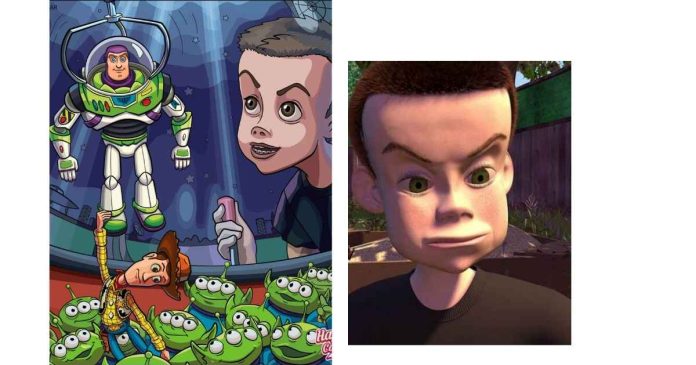Sid Phillips, the notorious toy-destroying neighbor from Pixar’s Toy Story (1995), is often labeled as the villain of the film. Known for his wild behavior, explosive creativity, and disregard for the well-being of his toys, Sid became the archetype of a “bad kid” in the minds of many viewers. But is Sid truly evil, or is he simply misunderstood? Let’s delve into the psychology of this infamous character to uncover the truth.
Who Is Sid Phillips?
Sid Phillips is a rambunctious 11-year-old boy with a penchant for destruction and experimentation. Living next door to Andy, the protagonist of Toy Story, Sid contrasts sharply with Andy’s loving, imaginative relationship with his toys. Instead of playing with his toys conventionally, Sid modifies, disassembles, and reassembles them into strange and sometimes disturbing creations.
Sid’s most infamous acts include:
- Strapping a rocket to Buzz Lightyear with the intent to launch him into the stratosphere.
- Creating hybrid toys, like a doll’s head fused with spider-like mechanical legs.
- Laughing maniacally while observing the chaos he causes.
At first glance, these actions seem cruel, painting Sid as a typical villain. However, a closer look reveals a more nuanced perspective.
Evil or Misunderstood?
1. Sid’s Age and Developmental Stage
Sid is a child, and his actions reflect a lack of maturity rather than inherent malice. At 11 years old, he likely doesn’t understand the moral implications of his behavior. To Sid, his toys are inanimate objects—tools for exploration and experimentation—not living beings with feelings (as the audience knows them to be).
Children at Sid’s age often exhibit curiosity through destructive play. Taking things apart and reassembling them can be a way of learning how the world works. Sid’s behavior, while chaotic, aligns with this developmental stage.
2. Lack of Supervision
Throughout the movie, Sid’s home environment appears neglectful. His parents are either absent or disengaged, and his sister, Hannah, often bears the brunt of his mischief. The lack of guidance or boundaries in Sid’s life could contribute to his destructive tendencies. Without an adult to channel his creativity into constructive outlets, Sid turns to his own extreme methods.
3. Creative Genius or Villain?
Sid’s hybrid toys, though eerie, showcase an undeniable level of creativity and engineering skill. He transforms mundane objects into imaginative inventions. For example:
- The spider-baby hybrid demonstrates an understanding of mechanics.
- His use of rockets and firecrackers reflects a budding interest in science, albeit expressed in reckless ways.
What if Sid’s creativity had been nurtured? With proper guidance, Sid could grow into a brilliant inventor or engineer rather than being dismissed as a troublemaker.
4. A Victim of Perspective
In Toy Story, the audience experiences the story from the toys’ point of view. From their perspective, Sid’s actions are terrifying. However, in Sid’s mind, he’s simply having fun. If we didn’t know the toys were alive, his actions might not seem so sinister. After all, plenty of kids modify, break, or discard toys without malicious intent.
Rehabilitation in Toy Story Canon
Interestingly, Toy Story 3 offers a glimpse into Sid’s potential redemption. As an adult, Sid is seen working as a garbage collector, wearing his signature skull T-shirt. Fans have speculated that Sid, now aware of toys’ sentience after his encounter with Woody and Buzz, chooses this job to protect discarded toys from destruction.
This interpretation reframes Sid’s arc: rather than a villain, he becomes someone who learned from his mistakes and found a way to make amends.
The Verdict: Misunderstood
While Sid’s behavior in Toy Story is undeniably extreme, labeling him as evil oversimplifies his character. His actions stem from curiosity, a lack of guidance, and a childlike ignorance of the consequences. Sid is a misunderstood kid with boundless creativity, albeit poorly channeled.
With the right environment and mentorship, Sid could have been encouraged to use his inventive mind in positive ways. Instead of viewing Sid as a villain, perhaps we should see him as a cautionary tale about the importance of nurturing creativity and providing children with the support they need.



